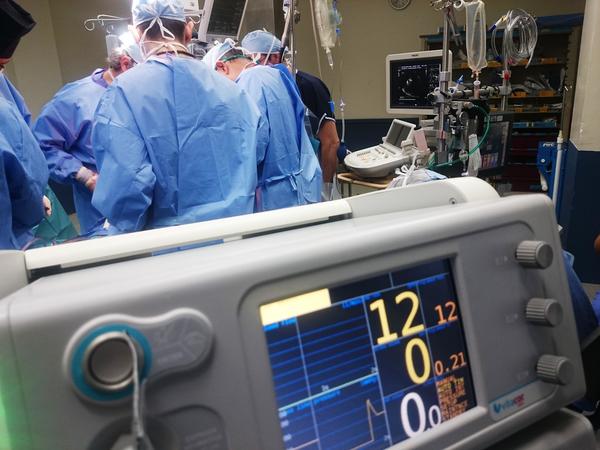Healthcare invented the concept of preventative care - the regular analysis of patient health indicators and diagnostics to stay ahead of issues. Practitioners aim to discover health related anomalies in their earliest stages of development in order to treat them quickly before they become life threatening and catastrophic. If we were to extend this principle to the digital services doctors and clinical staff need and use in treating patients, wouldn't it also make sense to monitor and analyse the application services and underlying networks to stay ahead of slowdowns that could wreak havoc throughout the patient care delivery network?
Virtualized Application Services In Healthcare
Most healthcare organizations in recent surveys report wide-spread deployment of virtualized network services and high adoption rates of "as-a-service" models. Micro-services applications, electronic medical records (EMR) and radiology services are just a few of the essential healthcare applications being virtualized or deployed as a service. So when slowdowns and outages occur, doctors, nurses, clinicians, and especially patients may feel the pain.
Pinpointing root cause of degradations has become more challenging given the complexity of the modern environments. Resolution may be delayed and time lost as the ever increasing numbers of equipment and service vendors claim innocence as to the originating source of the problem. In many cases, healthcare IT organizations have proactively implemented visibility and monitoring tools to address such problems. In fact, leveraging wire data has become a popular approach to successfully minimizing risk and even getting ahead of slowdowns and outages in healthcare networks. However, of late, with the explosion in virtualized application server technology, the gaps in monitoring and service assurance visibility for have become more apparent and threatening.
Where Once We Were Blind, Now We Can See
Addressing deployment issues and cost concerns have, to date, been barriers to achieving the necessary visibility into virtualized healthcare applications, regardless of whether they are hosted in private data centers or public cloud environments. Innovations that expand the reach of proactive monitoring and analysis of the east-west traffic of virtualized applications are needed to overcome these visibility challenges.
Consider a multi-specialty, central U.S. healthcare organization that was experiencing slowdowns with its radiology information system (RIS) that leverages the DICOM protocol (Digital Imaging and Communications in Medicine) to communicate. Doctors, nurses, and clinicians require swift availability to RIS for file transfers and accurate retrieval of stored documents and images for the particular patient in question. In this particular case, the healthcare professionals were suffering significant wait times of up to 20 minutes delay in pulling up patients' cardiology images. These cardiology images were critical to have available during patients' exams for evaluation and diagnosis. Given the nature of the cardiology practice, minutes can mean the difference between life and death.
Attempting to rectify this problem had covered a few weeks, several war room calls involving upwards of 20 people from the healthcare organization's IT staff and third-party vendors (including the application provider) without resolving the issue. A great deal of time was lost as each vendor tried to prove it wasn't their part of the environment creating the slowdown.
The IT staff had been proactive in implementing a monitoring solution that relied on wire traffic to provide visibility and service assurance capabilities that helped refine the troubleshooting in the war room. The visibility gap became apparent as the IT staff and application vendor tried to understand how the traffic flowed through the virtualized application server farms. With the aid of their service assurance partner, the healthcare organization implemented virtual agents for monitoring within the RIS application servers to gain the full scope of information necessary to pinpoint the cause of the slowdown.
Preventative Medicine For Virtualized Application Service Assurance
With healthcare IT teams embracing the benefits and value of virtualized server environments, the visibility chasm is only going to become that much more threatening to safe and speedy treatment of patients. In the case of our healthcare with 20 minute delay in cardiology images, their expanded use of the solution they already had in place in their data center for proactive service assurance with the addition of virtual agents for the RIS application servers was the answer. It helped them bridge the gap in visibility to east-west traffic analysis and ultimately revealed that the radiology application was operating incorrectly. The application was archiving new images in third-tier public cloud storage, which was causing significant delays in retrieval and playback.
It would be easy to focus on the tactical value the IT staff reaped in gained with proactive service assurance visibility in the application server farms. That is, they have a significantly reduced mean time to resolve (MTTR) problems across their environment now - down from weeks, and 20 individuals dedicating hours in war rooms to under an hour of analysis time. Or even the impact on the doctors and hospital staff now that cardiac image retrieval has been reduced from 20 minutes to seconds with the corrections implemented by the application developers.
However, in looking at the bigger picture, the Executive Director of the healthcare organization expressed the true strategic value the new visibility provided when she exclaimed, "This almost certainly saved a life!"
Source: Health IT Outcomes (View full article)
Posted by Dan Corcoran on January 17, 2018 07:07 AM



Post a comment